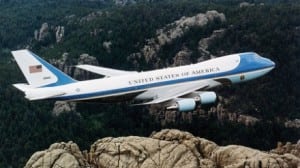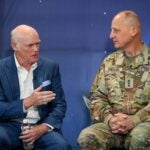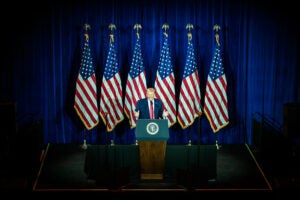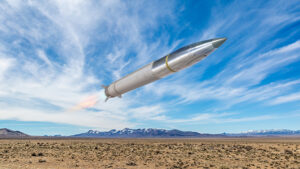
Defense Spending by NATO and Middle East allies will be a central theme of President Donald Trump’s inaugural international tour since taking office.Trump on Friday will fly to Saudi Arabia, then on to Israel, Rome, and Brussels for a meeting of NATO leaders, and then back to Italy for a meeting of the G-7.In Saudi Arabia and Israel, Trump is expected to reaffirm alliances and discuss the potential for foreign military sales. During his brief European tour, he likely will…

 By
By 











